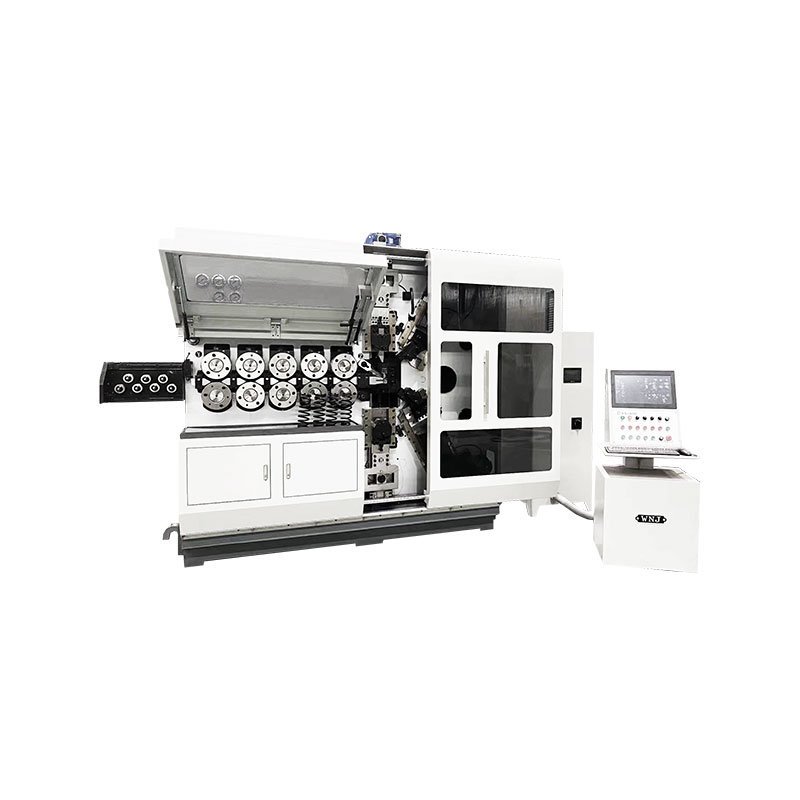Operating a spring machine involves handling various mechanical components and processes that can pose risks if not managed properly. To ensure safety while operating a spring machine, the following measures should be taken:
Personal Protective Equipment (PPE)
Safety Glasses: Protects eyes from flying debris, metal shavings, or any other material that may be ejected during the operation.
Gloves: Wear cut-resistant gloves to protect hands from sharp edges and small springs.
Hearing Protection: If the machine operates at high noise levels, use earplugs or earmuffs to protect your hearing.
Protective Clothing: Wear appropriate clothing that fits snugly to avoid getting caught in moving parts.
Machine Guards and Shields
Install Safety Guards: Ensure all moving parts, such as gears, belts, and chains, are properly guarded to prevent accidental contact.
Use Shields: Utilize transparent shields where necessary to allow visibility while protecting the operator from ejected materials.
Training and Knowledge
Proper Training: Operators should receive comprehensive training on how to safely operate the spring machine, including understanding the machine’s functions, potential hazards, and emergency procedures.
Understanding of Controls: Familiarize yourself with the machine’s controls, including emergency stop buttons, and understand how to use them effectively.
Material Knowledge: Understand the materials being used and how they behave during the spring-making process.

Pre-Operation Checks
Inspect the Machine: Regularly inspect the machine for any signs of wear, damage, or malfunction. Ensure that all safety features are functioning correctly.
Check Settings: Verify that the machine settings (e.g., tension, speed, feed) are correctly adjusted for the specific job to avoid unexpected machine behavior.
Tool Condition: Ensure that the tooling is in good condition and correctly installed. Worn or improperly set tools can lead to accidents.
Operational Safety
Maintain Focus: Stay alert and focused while operating the machine. Avoid distractions, as inattention can lead to accidents.
Proper Handling of Materials: Handle raw materials and finished springs with care to avoid injury from sharp edges or unexpected spring action.
Controlled Environment: Keep the work area clean and free from obstructions or spills that could lead to slips or falls.
Emergency Procedures
Emergency Stops: Ensure you know how to quickly and effectively stop the machine in an emergency.
First Aid: Have access to first aid kits and know the location of emergency exits and procedures in case of an accident.
Report Malfunctions: Immediately report any machine malfunctions or safety hazards to a supervisor to prevent potential accidents.
Post-Operation Safety
Power Down: Always turn off the machine and disconnect it from the power source before performing any maintenance, adjustments, or cleaning.
Proper Storage: Store materials and tools safely after use to prevent them from becoming hazards.
Documentation: Keep a log of any issues, maintenance performed, or incidents for future reference.
Regular Maintenance
Scheduled Maintenance: Adhere to a regular maintenance schedule to ensure the machine remains in safe working condition.
Lubrication: Regularly lubricate moving parts to prevent wear and potential mechanical failures.
Calibration: Ensure the machine is regularly calibrated to maintain precision and safety.
By following these safety measures, operators can significantly reduce the risk of accidents and ensure a safe working environment while operating a spring machine.


 English
English 中文简体
中文简体











